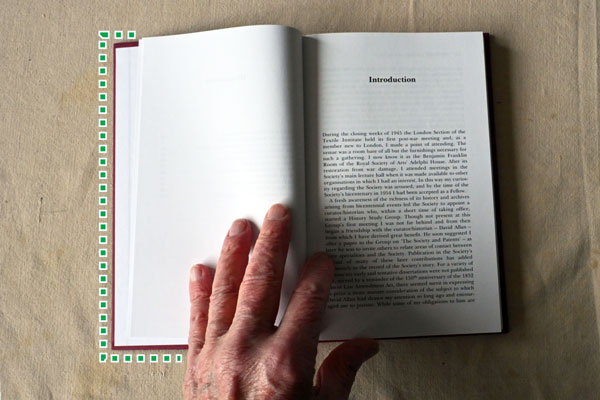
The squares ~ in purple ~ are visible ~
close to the green dotted line.
The thumb is touching the back cover squares ~
which are hidden from sight
For most traditional and casebound books the covers extend ~ very slightly ~ beyond the edges of the bookblock. These projections are called the squares.

The squares provide extra protection for the edges. This was paricularly important in ancient days when strong wooden boards kept the precious handwritten vellum leaves from damage [117143].
The amount of overlap is dictated mainly by appearance ~ larger books having larger overhang. Typically it is about 3mm or 1/8" ~ but choice varies. They are invariably designed to be equal on head ~ tail ~ and fore-edges. In practice there are likely to be variations of a millimetre or two. The inner margin of the squares is delineated by the paste-down endpapers.
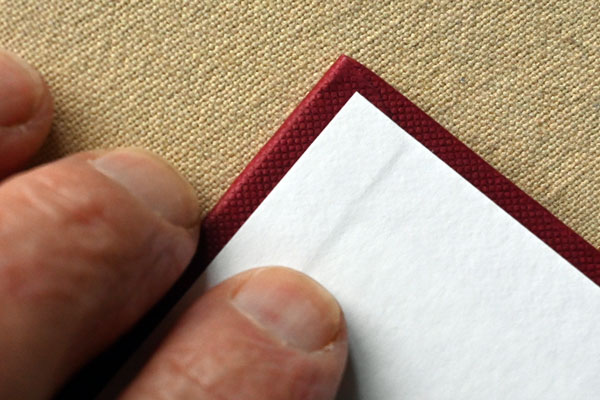
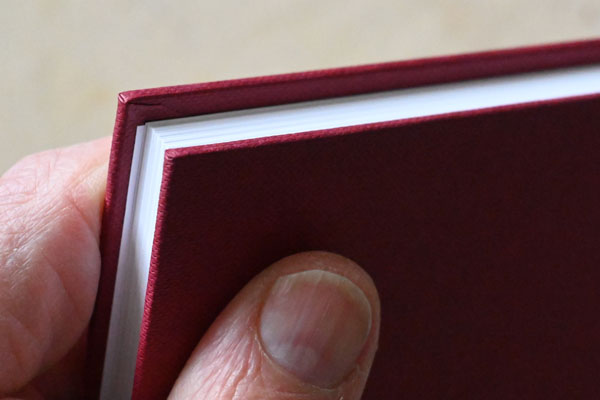
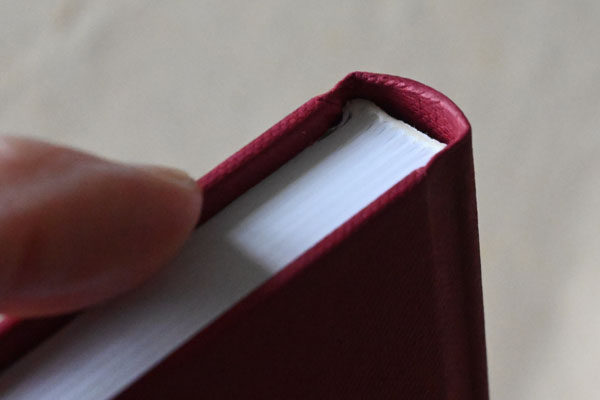
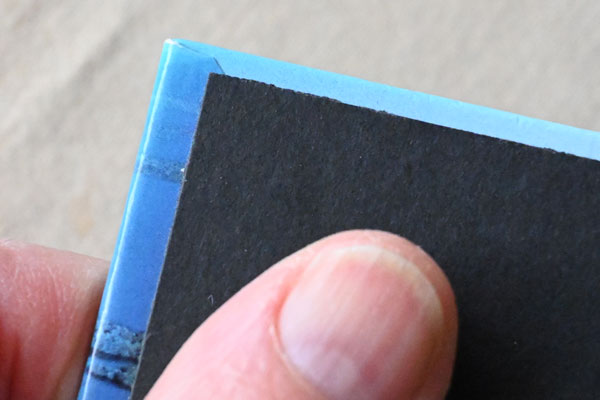

Occasionally the fore-edge margins vary in width from those at the head and foot (which are invariably equal). This is because the end-papers stretch in that direction to a greater or lesser extent ~ depending on the binder's skill. Some binders maintain that the fore-edge square should be greater. I feel that they should all be equal ~ by definition of square.
The only reason I can think of for these long thin rectangular overhangs to be called squares is because there are tiny squares of overlap at the corners. I await further comment or enlightenment on this.
The size of the suares depends on the choice of the binder ~ or maybe the client. That choice will depend on the size and style of the book.
By definition flush-edge books ~ such as common paperbacks ~ do not have squares.
I have often seen ~ and made ~ books with a flush head and foot edge and an overhanging fore-edge.

It is a neat way of cheating on the width measurements ~ but I consider it quite attractive and sensible [124761].
In the Yapp style of binding the hard cover-board squares are replaced by a limp leather overhang [114122] .
